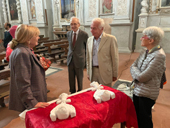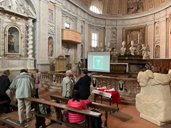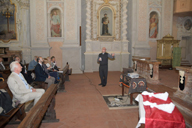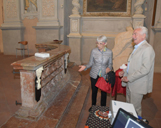 Welcome to the Computer Vision and Multimedia Lab website.
Welcome to the Computer Vision and Multimedia Lab website.
GET IN TOUCH
3D replica of cherubim for the Church of San Luca in Pavia / Replica 3D di cherubini per la chiesa di San Luca di Pavia
The aim of this project was the 3D modeling and 3D printing of two cherubim in relief, by the sculptor Fossati and dated 1684, stolen from the balustrade of the high altar of the church of San Luca in Pavia in the early 90s of the last century and never found. This is an example of application of new technologies to art, in this particular case to replicate a stolen object and return it to its original location.
The idea of the two statues' reconstruction made with 3D computer graphics is dated back to the academic year 2018/19, from Luisa Erba and Virginio Cantoni, teachers of the Faculty of Engineering of the University of Pavia. At first this task was assigned to two students of the Master's Degree in Mathematics, Giulia Braghini and Nicole Cardili, who - following the Engineering course of Computer Vision - applied 3D modelling techniques to developing a mathematical representation of the relief of one of the two cherubim. Through specialized software (Adobe Fuse) they modeled the head, then completing the other parts with basic geometric modeling, polygonal modeling and digital sculpture through a second specialized software (Blender). To the obtained result is applicable a renderer that, defined the spatial position of the lights and the observer’s point of view, based on the laws of optics and visual perception, generates a virtual 2D rendering of the cherub.
For 3D printer production, the models have been converted to a printer-readable version. In this phase a second activity started, with the Bachelor thesis in Electronic and Computer Engineering entitled "Photogrammetry for art: the Cherubim of San Luca", by Adriano Cotta Ramusino, developed at the laboratory of Computer Vision and Multimedia (supervisor: Virginio Cantoni). Objective: the 3D modelling of both the statues, followed by their 3D printing. Having been stolen only two of the eight cherubim that originally adorned the altar, it was possible to reconstruct them with metric fidelity starting from the surviving statues, which are equal two by two, with the pairs positioned specularly with respect to the central nave. The two stolen reliefs were different, so an exact copy of each remained in the church, allowing the entire process of recreation.
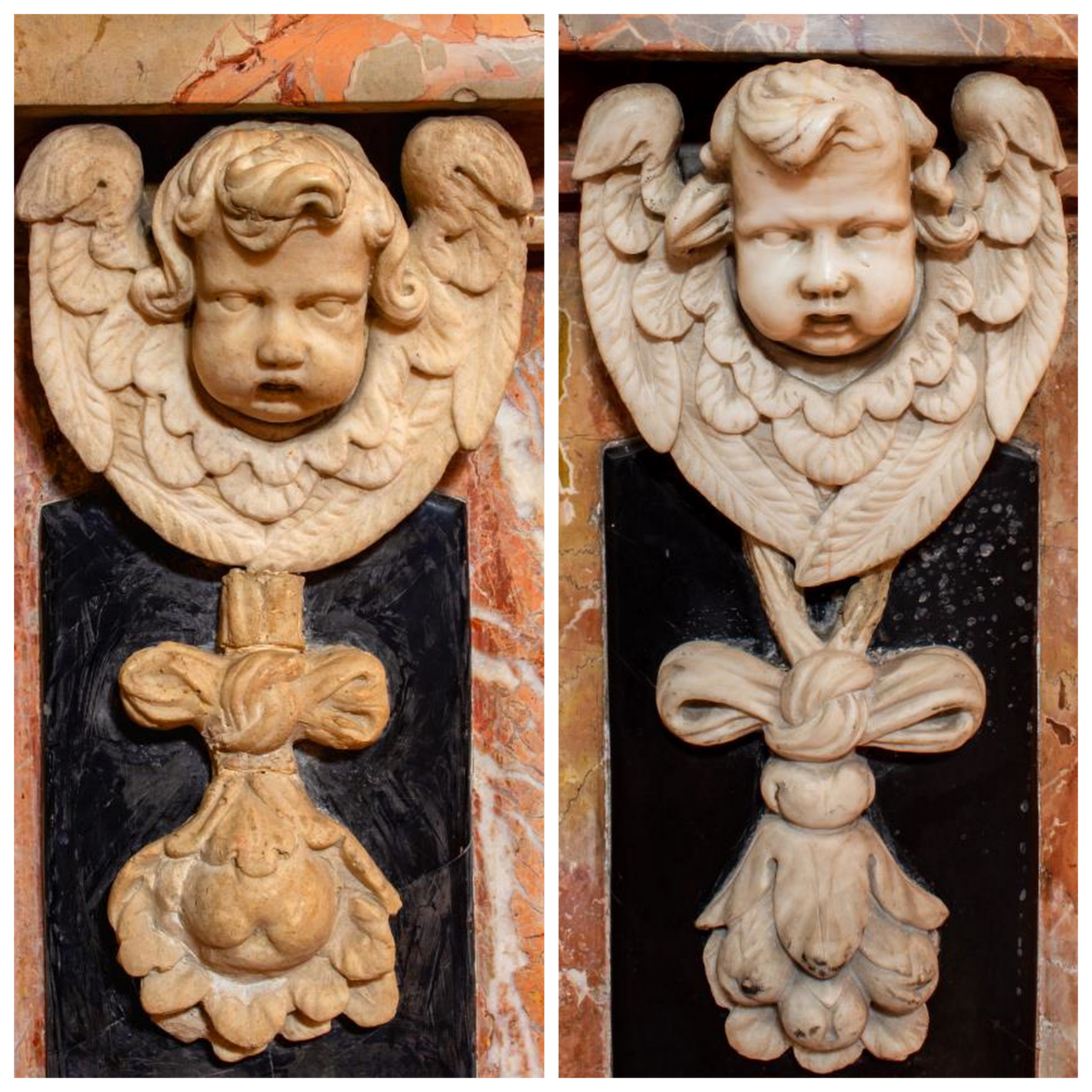
The technique applied is photogrammetry, a name derived from the Greek words "photos", that is light, "gram", that is drawing, and "metròn", measure. Photogrammetry, in fact, is a technique that allows to move from a set of two-dimensional images (drawings, photographs, diagrams) to a three-dimensional form that replicates exactly the proportions and measures of the object represented.
Its mathematical formulation dates back to 1867, in the work "Die photogrammetrie" by the Prussian architect Albrecht Meydenbauer, and was used in past centuries for various purposes, mainly cartographic and architectural. In more recent times it has been of particular importance in the medical sector, where it is exploited to reconstruct three-dimensional organs or tissues. Today, thanks to the improvement of computers computing power and digital cameras, the fields of application of this technique are many, with exceptional results almost within everyone’s reach.
The process. The first step in photogrammetric reconstruction is a meticulous photographic survey. In the specific case of the cherubim of San Luca, many photographs of the originals were taken, placing a reflex camera on an imaginary spherical surface and taking a picture about every 15°, both on the azimuthal and zenith axis. Details were photographed in further targeted images, to obtain a more refined final result. The photographs thus obtained have been standardised with Photoshop Room Classic, before being inserted in Meshroom (Open Source 3D Reconstruction software). The latter software identifies the position of the camera for each shot and exploiting the perspective geometry and the chiaroscuro, builds a cloud of points that are then merged into a mesh, which is the initial three-dimensional model, that is then subject to a cleaning and optimization step for printing, made with the Blender software.
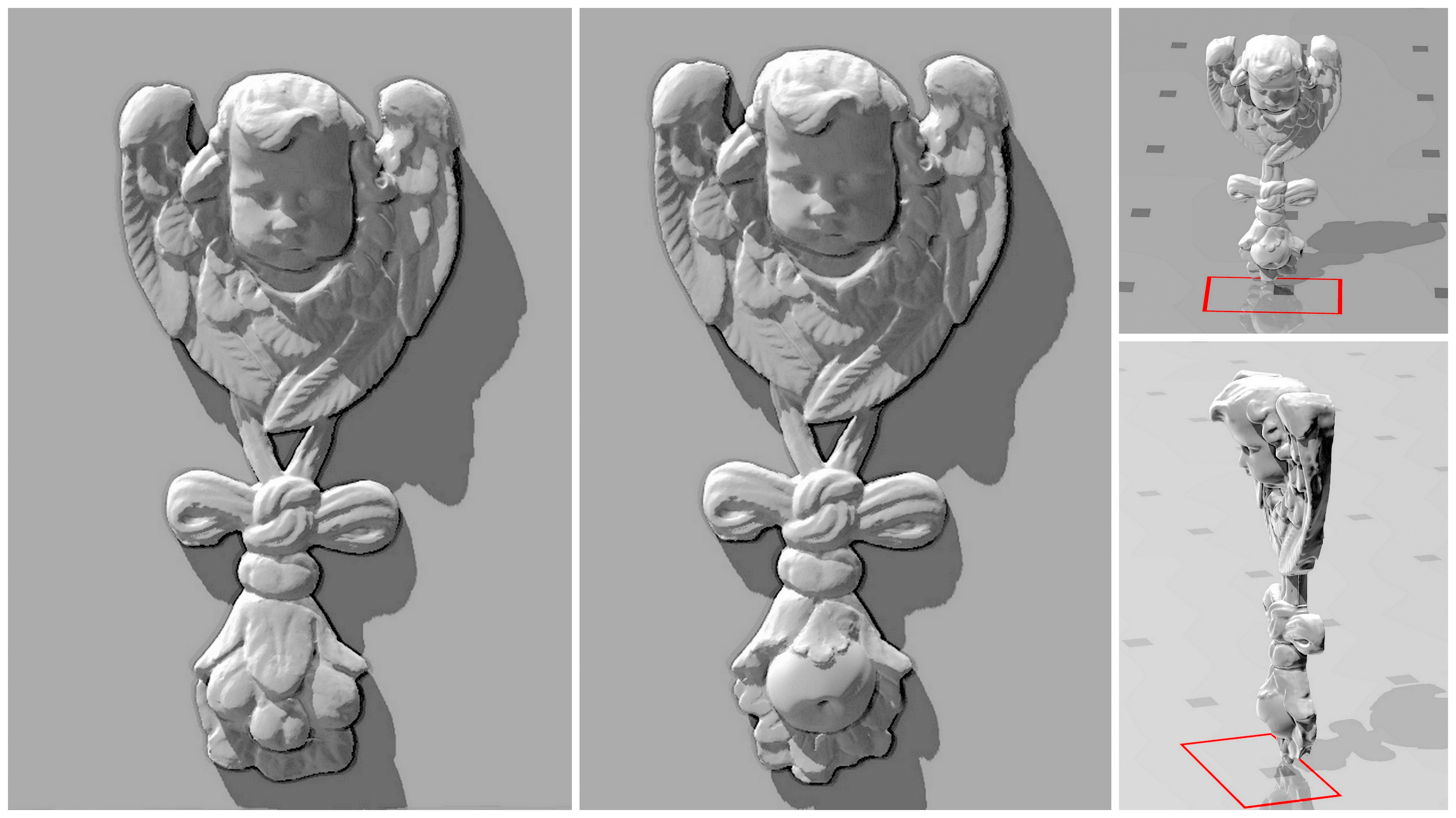
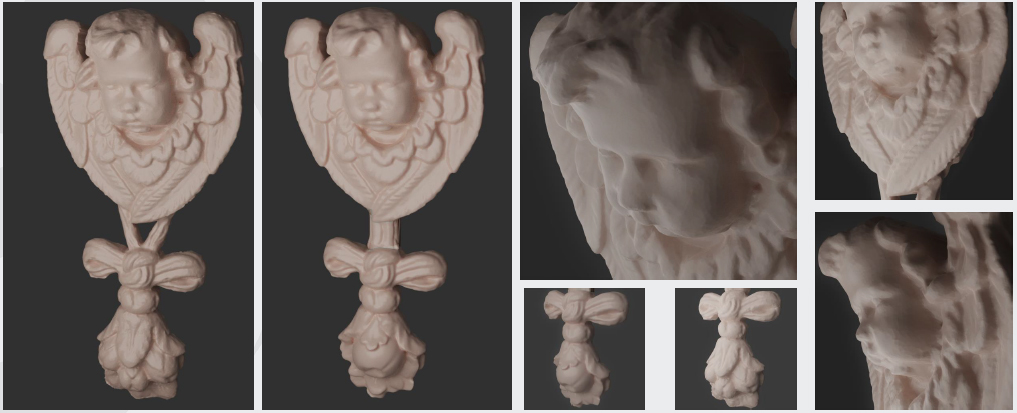
The 3D printing process. The models, manually processed to refine the definition of the smallest details and to make them interpretable by a 3D printer, were entrusted first to the 3D4MED laboratory, and prototypes have been produced using a 3D Systems ProJet® CJP 460 Plus. This printing technique allows the production of pieces in a material similar to plaster and offers the possibility of creating color prints, a feature in some cases extremely useful.
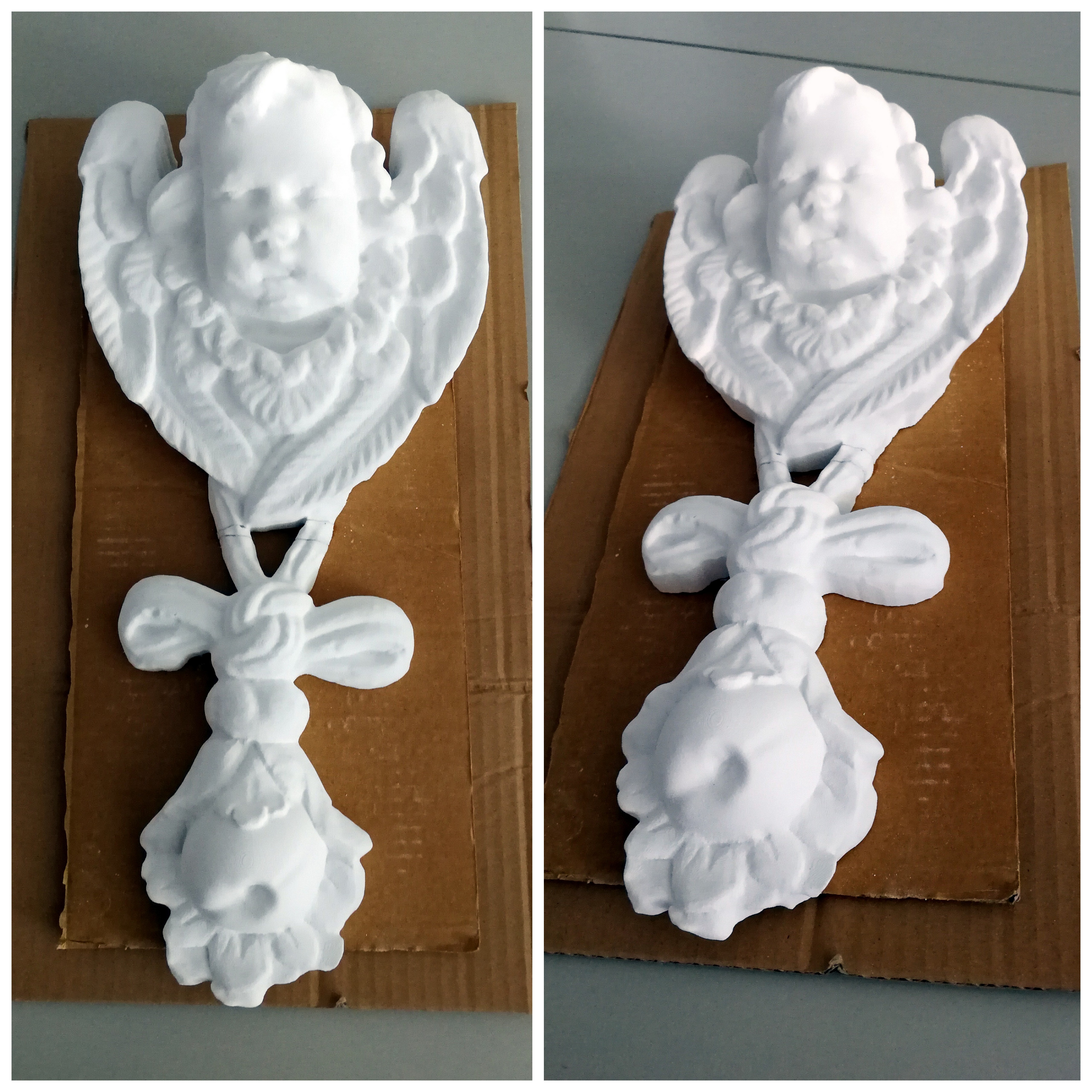
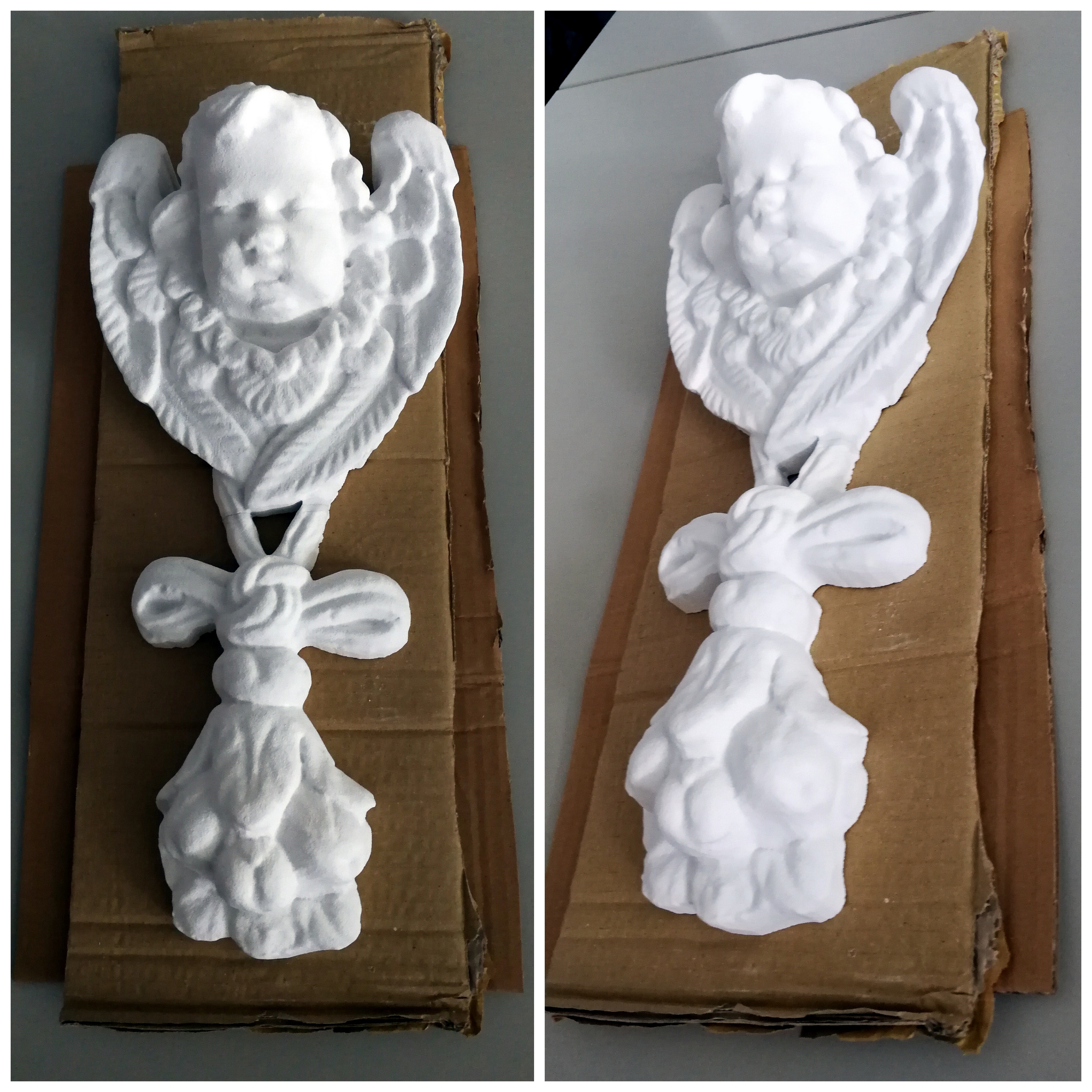
A second reproduction was carried out at the rapid prototyping laboratories of the association comPVter of Pavia: with the expert advice of the group, in particular thanks to Giuseppe Leone, a state-of-the-art machine has been chosen, using a Fused Deposition Model (FDM) printing, that is, very thin layers of melted plastic on top of each other, gradually creating the final shape. The material used is very resistant to light and stress. The reproductions thus obtained, extremely faithful to the original statues, are ready to be returned to the community of San Luca to adorn the high altar again.
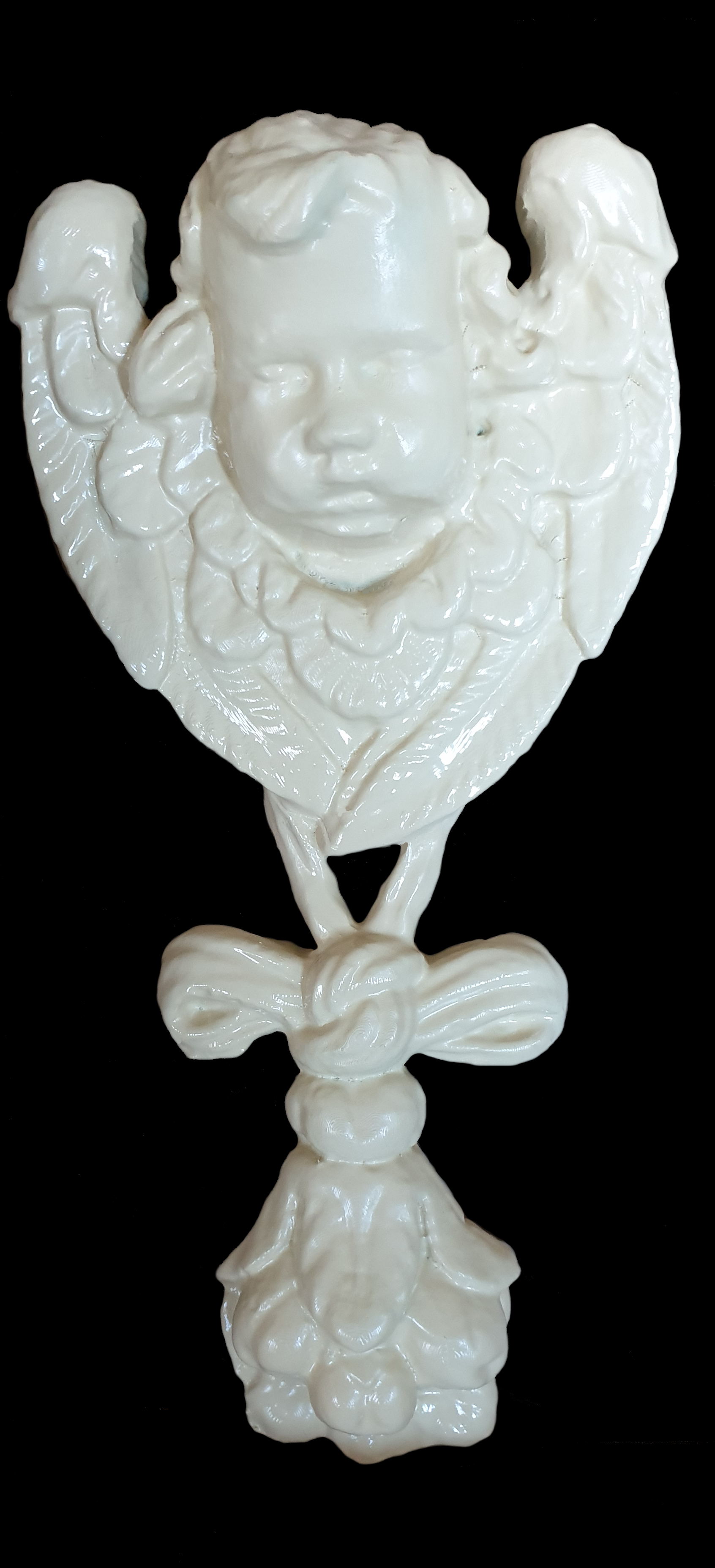
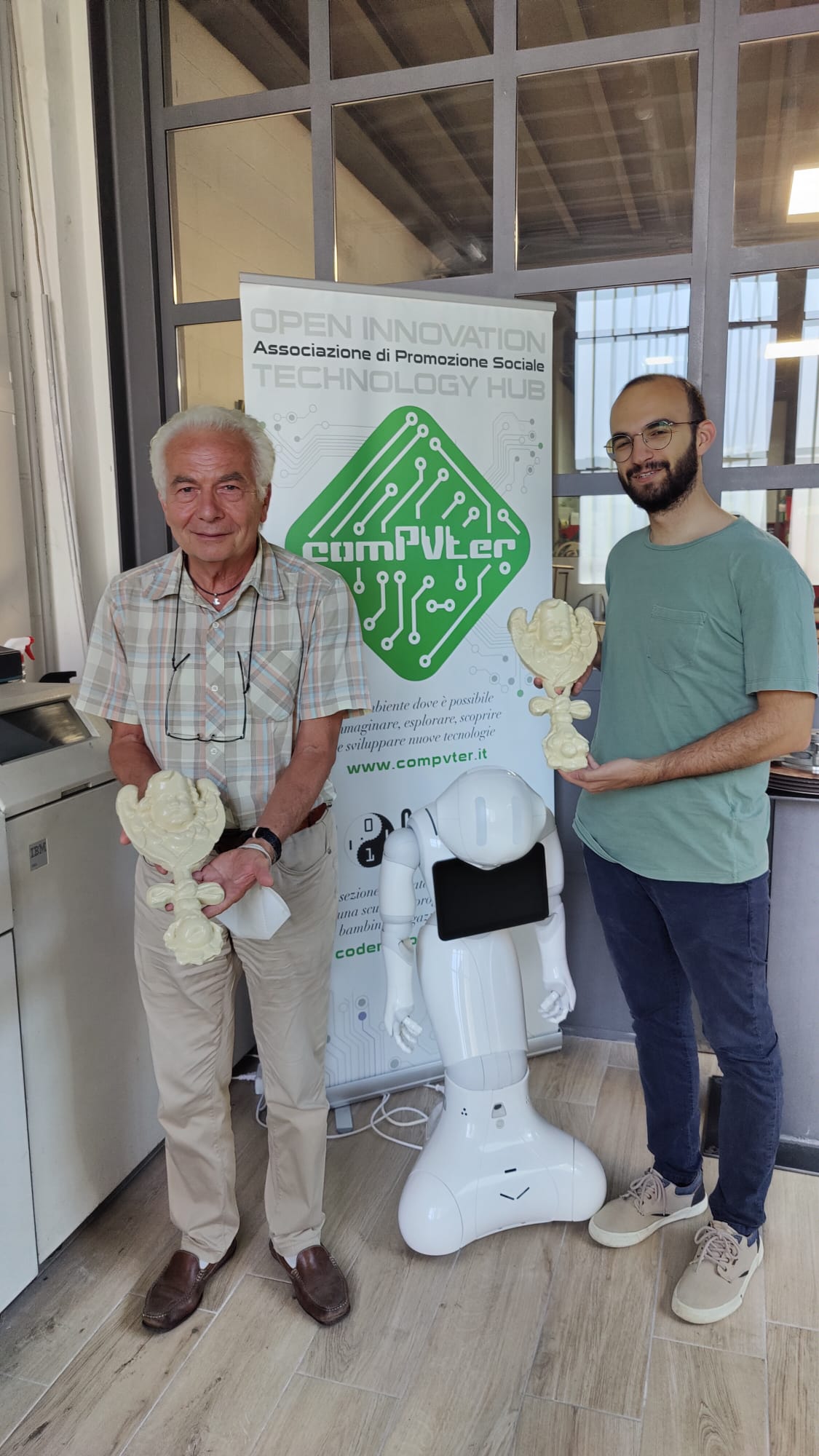
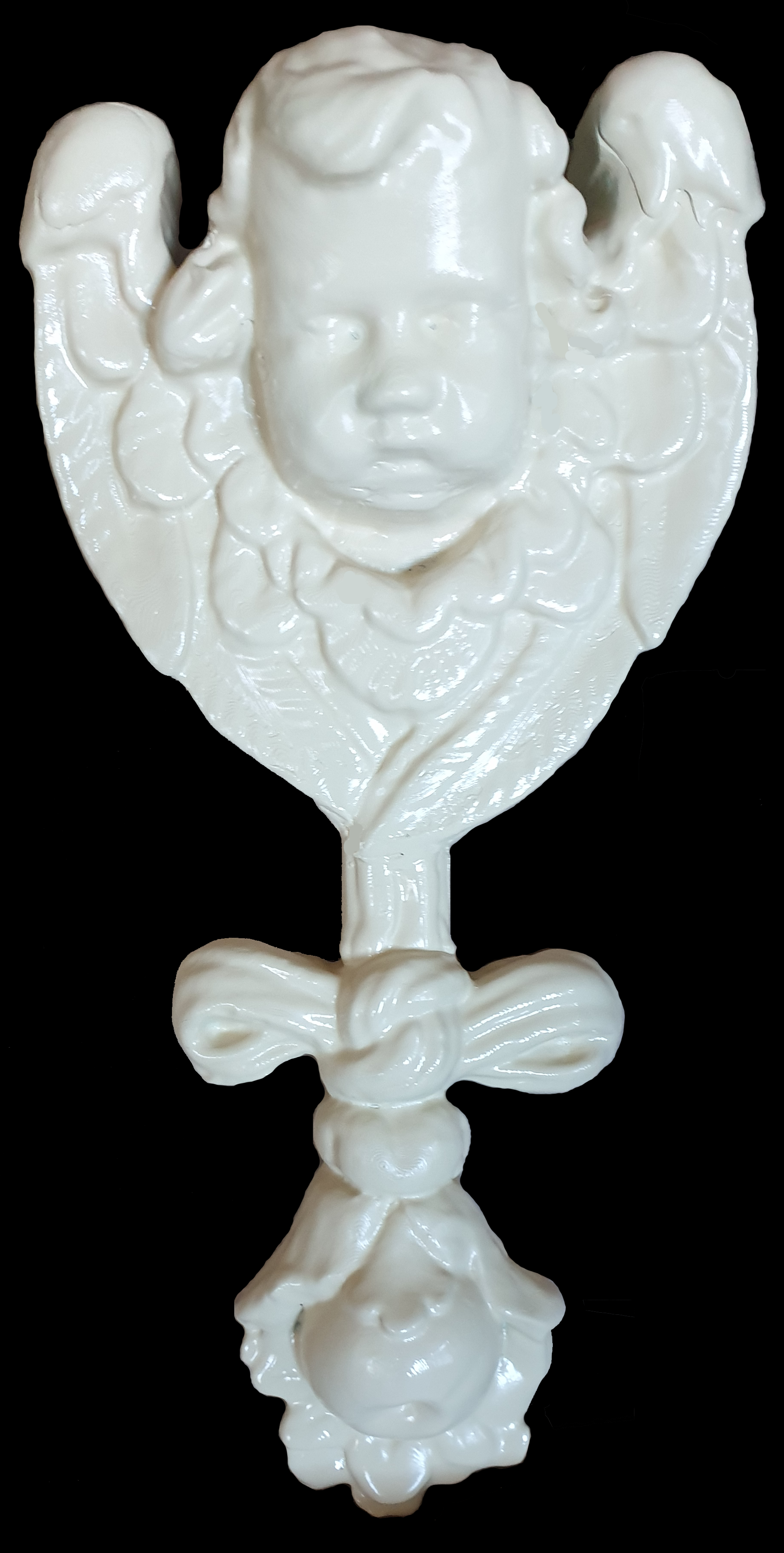
The inauguration was on Saturday, 24 September 2022, at 11:30, in the church of San Luca, located in Pavia in Corso Garibaldi (article on the website of the University news http://news.unipv.it/?p=70948.)
Reproduction via 3D printers was carried out on the initiative of the Rotary Club Pavia.
Here are some photos taken during the inauguration:
